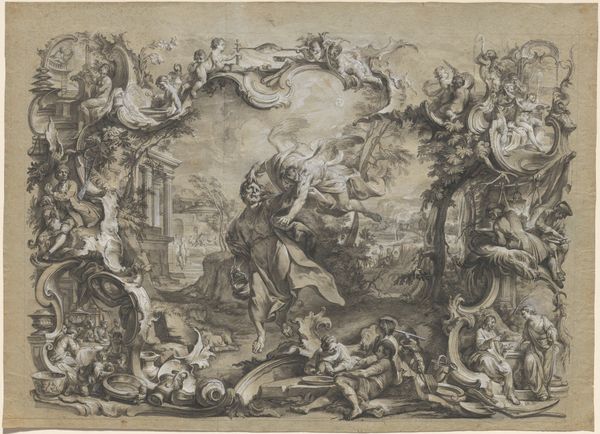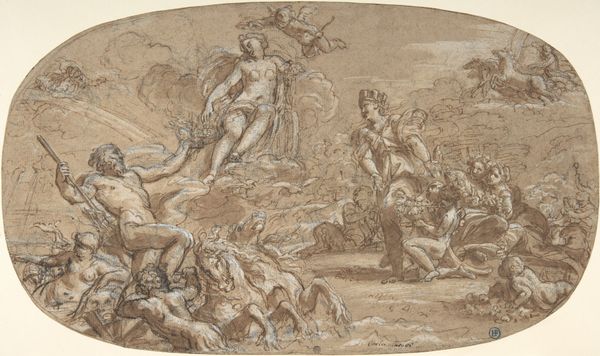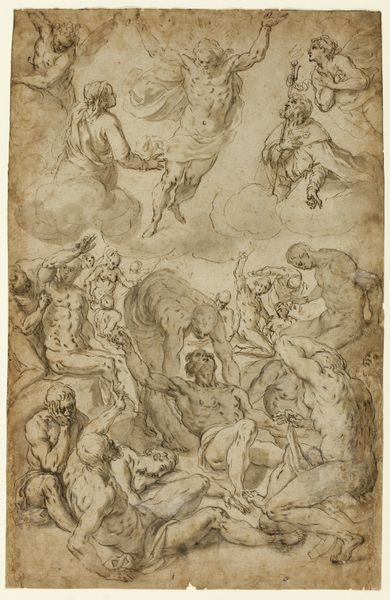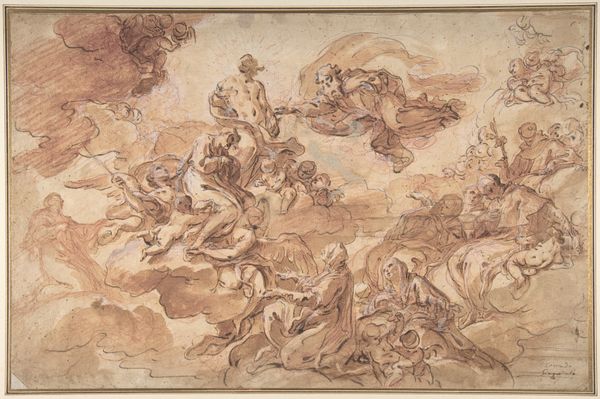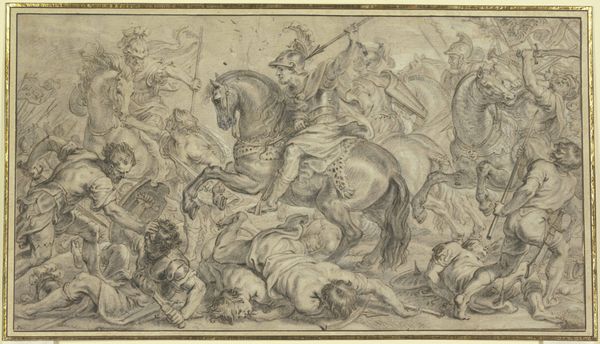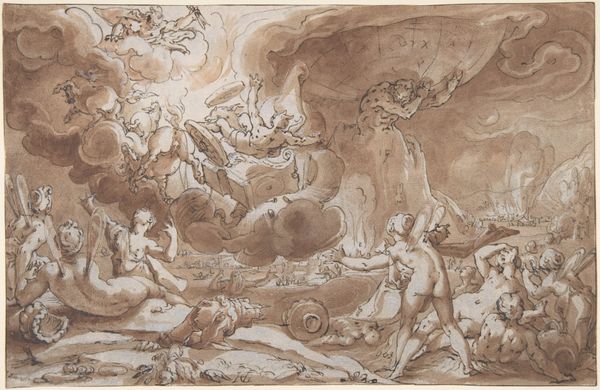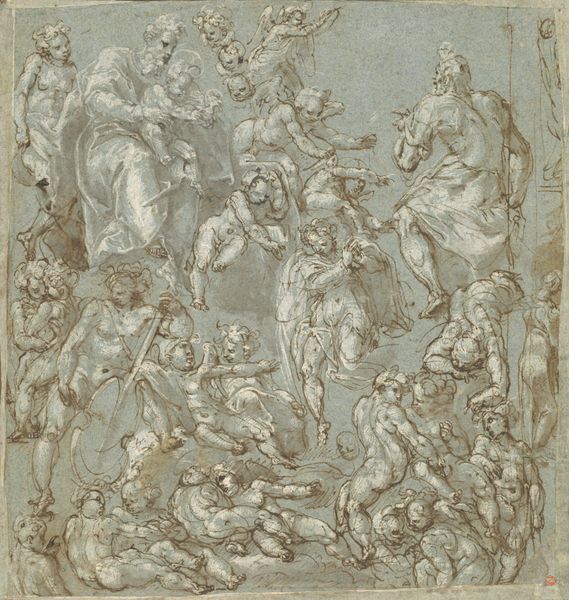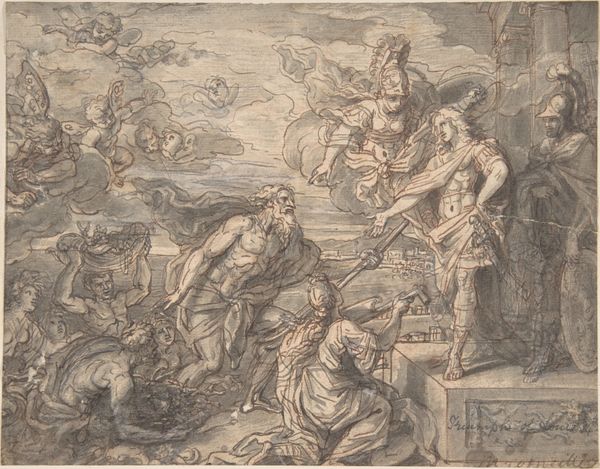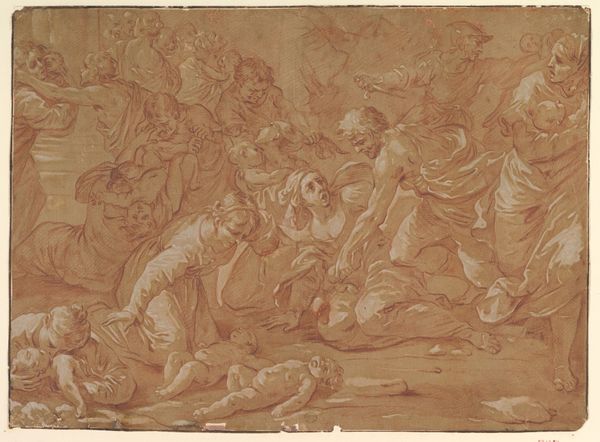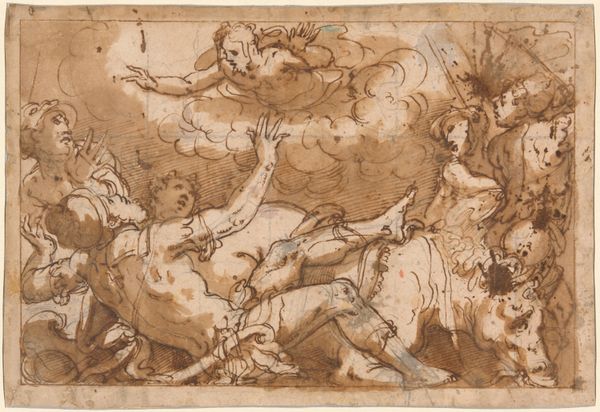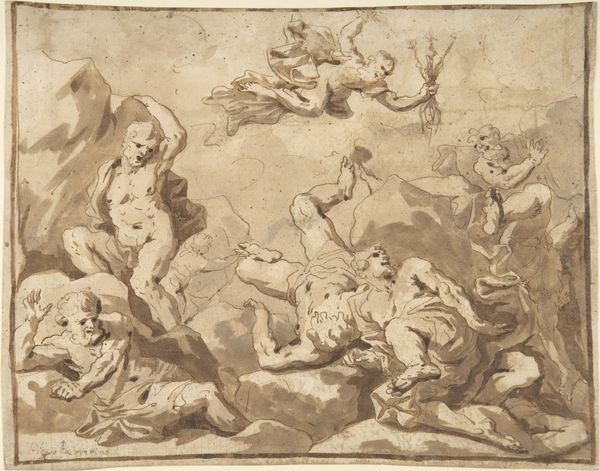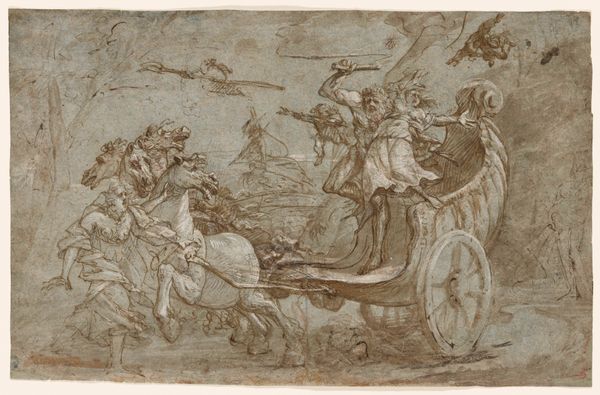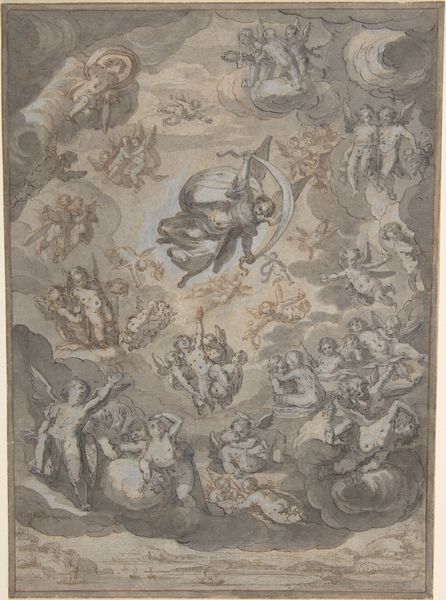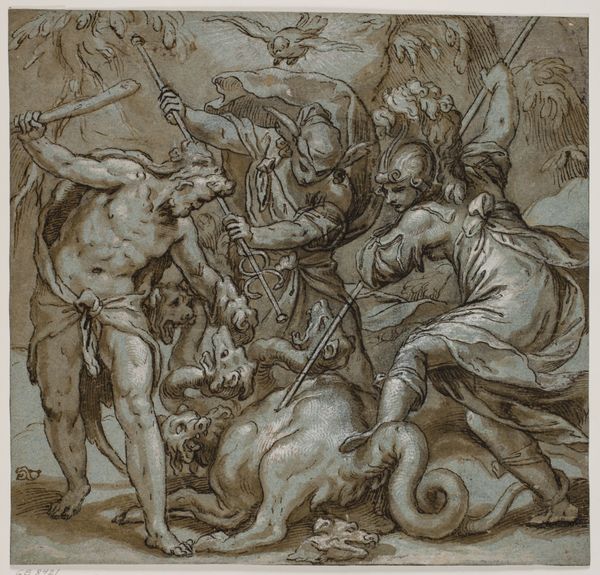
drawing, charcoal
#
drawing
#
allegory
#
charcoal drawing
#
mannerism
#
figuration
#
charcoal
#
history-painting
Dimensions: overall: 50 x 62 cm (19 11/16 x 24 7/16 in.)
Copyright: National Gallery of Art: CC0 1.0
Curator: This arresting image is a drawing called "The Fall of Phaeton," rendered circa 1591 by Joseph Heintz the Elder. He worked with charcoal, creating a dramatically dynamic scene. What’s your first take? Editor: My immediate reaction is that it’s incredibly chaotic, almost like an explosion frozen in time. All the figures are caught mid-motion, twisting and falling. Curator: Precisely! It illustrates the classical myth of Phaeton, son of Helios, who disastrously attempted to drive his father's sun chariot. Consider the arrogance embodied here, the perils of unchecked power. The socio-political implications of such a tale are rich in warnings. Editor: And the swirling composition enhances that sense of upheaval. Notice how Heintz uses the dark charcoal to create deep shadows and contrast, emphasizing the drama. It reads to me as a morality tale about ambition taken too far and also about who gets to have access to power in the first place. It feels… contemporary in its concerns. Curator: Exactly, Heintz doesn't simply depict the event, he stages a spectacle. It's rooted in the Mannerist style, where exaggerated forms and dramatic compositions were prized, mirroring anxieties about shifting social structures in Europe at the time. The art world's power was expanding through institutions, and art had something to say. Editor: Absolutely, the Mannerist style serves as a commentary in itself. It's over the top! You can almost hear the thunder and the screams! The figures are tumbling every which way and there’s very little negative space, the action is packed into the drawing and yet, paradoxically, it holds together structurally. How do you understand the lasting impact this has in considering image construction and messaging? Curator: "The Fall of Phaeton" continues to be relevant as a reflection on human hubris, class divides, and the destructive consequences of unchecked power in society. As such, it functions as a historical reminder of the crucial role of artists in critiquing those themes and asking those questions. Editor: Yes, examining art like this compels us to not just observe but to really ask questions about what the work says about the world it was produced in, but also how it speaks to current power dynamics. Curator: Agreed, this detailed artwork and complex history offers invaluable social commentary and remains a critical reflection tool for our modern age.
Comments
No comments
Be the first to comment and join the conversation on the ultimate creative platform.
